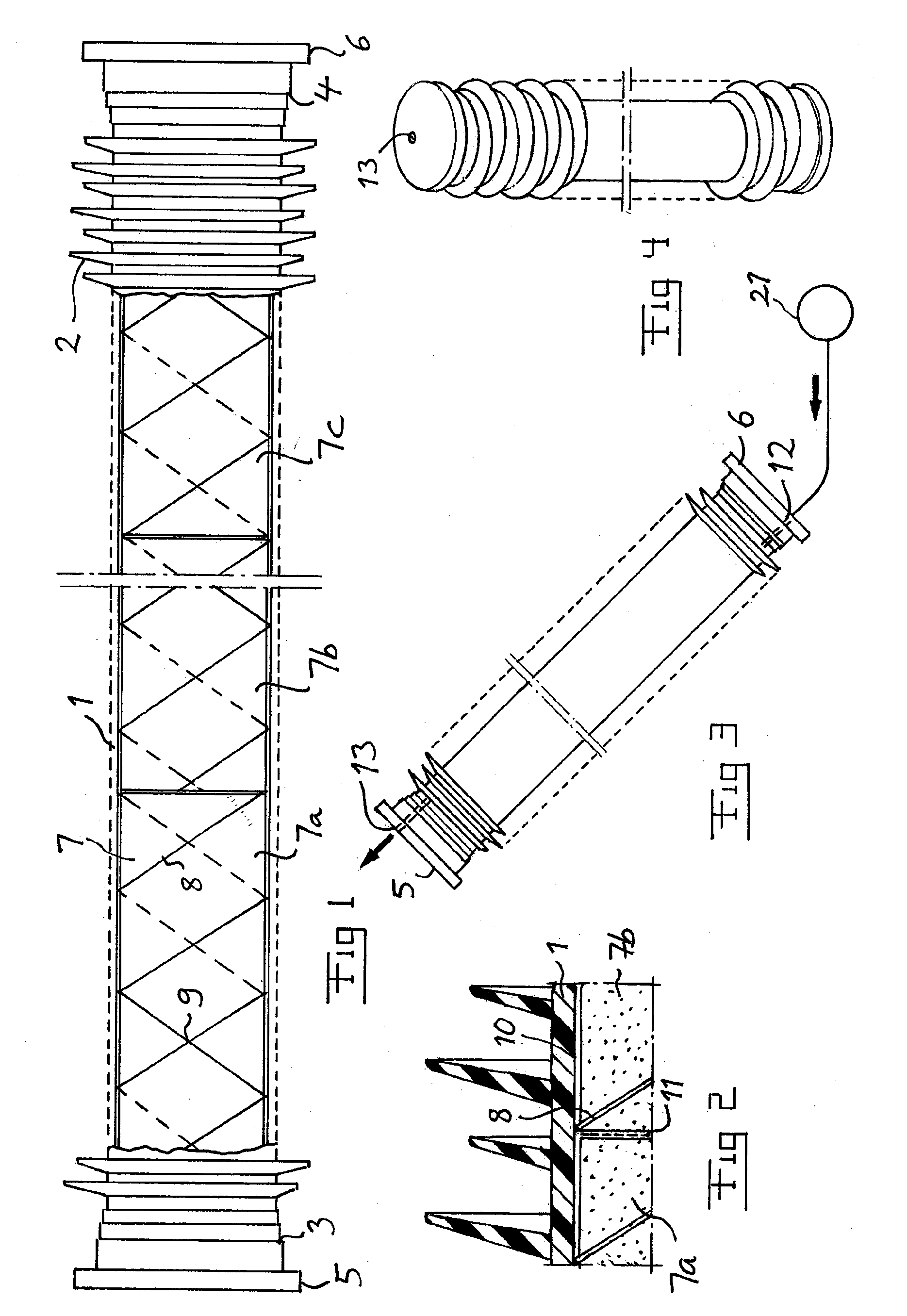Method For Manufacturing a Post Insulator and a Post Insulator
a post insulator and manufacturing method technology, applied in the field of post insulator manufacturing, can solve the problems of difficult to fill the entire inner volume of the tube, short circuit risk, and cracks in the core, and achieve the effect of reducing the risk of short circui
- Summary
- Abstract
- Description
- Claims
- Application Information
AI Technical Summary
Benefits of technology
Problems solved by technology
Method used
Image
Examples
Embodiment Construction
[0037]FIG. 1 shows schematically a post insulator according to the present invention. This is made of a tube 1 of a fibre composite, such as glass fibre epoxy, which here has a length of approximately six metres and an inner diameter of 31 cm and an outer diameter of 33 cm. The tube 1 has an outer profile of rings 2 of silicon rubber. The tube is at each end thereof provided with flanges 3, 4 of aluminium adhesived to the ends of the tube. Each end of the tube is provided with a flange cover 5, 6 having an outer diameter of about 46 cm and enclosing the inner volume of the tube.
[0038]The inner volume of the tube is occupied by a core 7 of an insulating material, such as foamed plastic.
[0039]The further structure of the post insulator will now be described while simultaneously describing the method for manufacturing the post insulator and making reference to all the figures. In this manufacturing process one of the flange covers, such as the flange cover 6, is initially not in place ...
PUM
| Property | Measurement | Unit |
|---|---|---|
| angle | aaaaa | aaaaa |
| angle | aaaaa | aaaaa |
| voltages | aaaaa | aaaaa |
Abstract
Description
Claims
Application Information
 Login to View More
Login to View More - R&D
- Intellectual Property
- Life Sciences
- Materials
- Tech Scout
- Unparalleled Data Quality
- Higher Quality Content
- 60% Fewer Hallucinations
Browse by: Latest US Patents, China's latest patents, Technical Efficacy Thesaurus, Application Domain, Technology Topic, Popular Technical Reports.
© 2025 PatSnap. All rights reserved.Legal|Privacy policy|Modern Slavery Act Transparency Statement|Sitemap|About US| Contact US: help@patsnap.com


